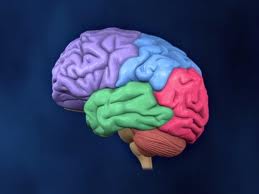Many older adults with a history of chronic schizophrenia can have a sustained remission if they receive appropriate psychosocial stimulation and support, according to Dr. Dilip V. Jeste.
Schizophrenia is a less important barrier to successful aging than are societal attitudes, health care disparity, and scientific or clinical biases, said Dr. Jeste, president of the American Psychiatric Association and chief of geriatric psychiatry at the University of California, San Diego (UCSD).
Optimizing pharmacotherapy, psychosocial interventions, diet, and exercise; curbing substance abuse; and adopting a positive approach on the part of clinicians, patients, and their families can help people with schizophrenia move gently into old age, Dr. Jeste said.
He and his UCSD colleague, Barton W. Palmer, Ph.D., proposed “a new positive psychiatry of aging,” a model “that would focus on recovery, promotion of successful aging, neuroplasticity, prevention, and interventions to enhance positive psychological traits such as resilience, optimism, social engagement, and wisdom.”
Currently, people with chronic schizophrenia face many obstacles to successful aging, including stigma, poverty, and lack of insurance. But they also face long-held biases of some scientists and clinicians who regard schizophrenia as intractable, as well as facing physical comorbidities such as metabolic syndrome, seen in one study in 60% of middle-aged and older individuals with schizophrenia (J. Clin. Psychopharmacol. 2009;29:210-5). In another study, investigators found that the Framingham 10-year risk of coronary heart disease rose by nearly 80% in middle-aged and older patients with schizophrenia (Schizophr. Res. 2001;125:295-9), Dr. Jeste noted.
People with schizophrenia characteristically have higher levels of stress, tobacco use, and alcohol and substance use, and are more likely to have a sedentary lifestyle. These factors often are exacerbated by poor health care, in addition to the biology of schizophrenia itself. Also, schizophrenia patients are affected by the adverse effects associated with medications such as atypical antipsychotics, which often are associated with weight gain and increased risk for type 2 diabetes, hyperlipidemia, and other cardio- and cerebrovascular disorders.
For these reasons, mortality in schizophrenia is higher than in the general population. For example, in a Finnish study, investigators found a 23-year gap in life expectancy between people with schizophrenia at age 20 and their age-matched peers in the general population. At age 40, the investigators found a 17-year discrepancy (Lancet 2009 July 13 [doi:10.1016/S0140-6736(09)60742-X]).
UCSD investigators have looked at more than 1,400 middle-aged and older people with schizophrenia, nearly 80% of whom had prodromal symptoms of the disorder before the age of 40. In longitudinal follow-up with clinical, neuropsychological, and functional evaluations, the investigators found that people with schizophrenia who were adequately treated had a relatively stable course, improvement over time in psychotic symptoms, and a rate of age-related cognitive change similar to that of people without schizophrenia (Acta Psychiatrica Scandinavica 2003;107:336-43).
As would be expected, people with schizophrenia experienced age-related declines in physical health, but they also reported improvements in mental health, as measured by self-rated quality of life, the authors found (Schizophr. Res. 2009;108:207-13).
Predictors of sustained remission include social support, being or having been married, having comparatively greater cognitive and personality reserve, and getting early treatment. However, neither age nor duration of schizophrenia are accurate predictors of successful, sustained remission, Dr. Jeste emphasized.
He cited two of the best-known examples of successful recovery/remission of people who had lived for decades with schizophrenia: John F. Nash, Ph.D., a 1994 winner of the Nobel Prize in Economic Sciences and the subject of the book (and later the film) “A Beautiful Mind” (New York: Simon & Schuster, 1998) and Elyn R. Saks, Ph.D., professor of law, psychology, and psychiatry and the behavioral sciences at the University of Southern California in Los Angeles. Dr. Saks chronicled her lifelong struggle with psychosis in the memoir “The Center Cannot Hold: My Journey Through Madness” (New York: Hyperion, 2007).
Although they are neither curative nor specific, antipsychotics might help control acute psychotic symptoms and prevent relapse in older patients. However, these drugs do not do much to help with day-to-day function, and carry increased risks of the adverse effects noted earlier. It is important to remember that the Food and Drug Administration issued a public health advisory in 2005 on the treatment of elderly patients with dementia with antipsychotics.
Psychosocial interventions such as cognitive-behavioral therapy and social skills training, functional adaptation training, diabetes awareness, vocational rehabilitation, and other programs also can have significant positive effects on older people with schizophrenia, Dr. Jeste said. The evidence stands in direct contradiction to Freud’s 1924 dictum that “old people are no longer educable,” Dr. Jeste noted.
A relatively new treatment approach is mobile intervention, in which smart phones or other communication devices are used to coach patients, promote self-management, and improve their coping skills.
In addition, Dr. Jeste suggested, more studies are needed to see whether the protective benefits of resilience, optimism, and social engagement seen in healthy older adults hold true for people with chronic severe mental illness.
Dr. Jeste reported that he has no financial relationships with the pharmaceutical industry.
